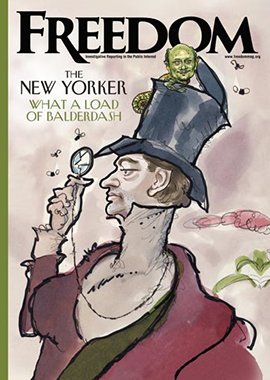A new documentary film airing on Scientology Network’s Documentary Showcase not only offers a succinct introduction to the history of this faith dating back more than 500 years, but offers a rare glimpse into the lives of those who practice its traditions and beliefs.
Under the Turban documents a young Sikh family’s journey around the world as they connect with diverse Sikh communities from various cultures, exploring their history and the contemporary significance of being a Sikh.
Directed by Satinder Garcha, the film was inspired by a question from Garcha’s 9-year-old daughter, Zara: “Papa, what does it mean to be a Sikh?” Garcha, who was born in India, says he tried to answer his daughter’s question “to the best of my ability,” but the question sparked an idea: “Why not embark on a mission in the next couple of years to try and find out?” Garcha, a dot-com pioneer and a graduate of the University of Texas, Austin, lives with his family in Singapore, where Zara “unfortunately does not come very much in contact with the [Sikh] community,” he says. To remedy that, he and his family set off on a five-year journey to discover the answer to Zara’s question.
“The word ‘Sikh’ means to learn. So somebody who continues to learn throughout his lifetime is a Sikh.”
“It takes a bit of courage—which is key to being Sikh I guess—to do something different, and to make a documentary like this,” says Zara’s mother, Harpreet Bedi, the film’s executive producer and Garcha’s high school sweetheart. “As a mother, I’m a little nervous because I know not everybody will be happy with everything that is shown,” she explains.
“But we’ve been traveling around and it allows us, every time we do a shoot, to go to a gurdwara [Sikh temple] and take our children with some purpose. For me, it’s how Zara sees Sikhism—I want her to have the principles of Sikhism instilled in her.”
The feature-length documentary chronicles the family’s travels and encounters with other Sikhs—from religious leaders and historians to trendy fashionistas and members of a Sikh motorcycle club—in an effort to better understand what it means to be a member of this unique faith in the modern world.
Under the Turban highlights how observant Sikhs wear a uniform designed to unify and bind them to their religious beliefs and remind them of their commitment to Sikh teachings. The film underscores that, when a Sikh ties a turban, the headgear is no longer just a long piece of cloth. Rather, it becomes one and the same with a Sikh’s head—symbolizing a religious commitment that, for millions of Sikhs, makes them feel what it means to be a member of the faith.
Sikhs make up some 19 million of India’s 1.4 billion people. One of the religion’s major aims is to reform India’s age-old social caste system. “The word ‘Sikh’ means to learn,” explains Hardev Singh, a spiritual leader at a gurdwara. “So somebody who continues to learn throughout his lifetime is a Sikh. Sikhism in its true sense can never be complete. You may spend your entire life learning but you will always have more to learn—you will always be a disciple.”
“Sikhism is an ever-accumulating tradition that evolves at the confluence of the Indic world with Hinduism, Buddhism, Jains and the Islamic world,” explains Dr. Nikky-Guninder Kaur Singh, a professor of religious studies at Colby College in Waterville, Maine. The religion’s historical roots lie in the oppression that millions of India’s Hindus suffered at the hands of successive waves of Muslim invaders, giving birth to a line of 10 gurus, starting with the faith’s founder, Guru Nanak.
Nanak, who was a Hindu, was born in 1469—23 years before Christopher Columbus set sail for America—in the Punjab province of the Indian subcontinent that was divided in 1947 between Hindu-majority India and Muslim-majority Pakistan.
The line of gurus culminated in 1675 with Guru Gobind Singh, the founder of the Sikh Khalsa—a martial fraternity of turbaned men and women whose name is derived from the Punjabi word for “pure.” In 1708, Sikhism produced its holy book, Guru Granth Sahib, considered a living text that is the faith’s “Guru in perpetuity.”
The aim of Sikhism was to “inculcate into an oppressed, deprived and overshadowed people a sense of belonging, a sense of pride,” says Sukhjit Singh, the maharaja of Kapurthala, a former kingdom in India’s Punjab state featured in the film. During the rule of the Mughal dynasty in India, when some emperors used force to convert Hindus to Islam, only Muslim noblemen were allowed to wear turbans, explains Singh.
But the 10th guru, Gobind Singh, declared that everyone was noble, and therefore worthy of wearing a turban with pride, says the maharaja. “Even if it means losing your head eventually.”






















